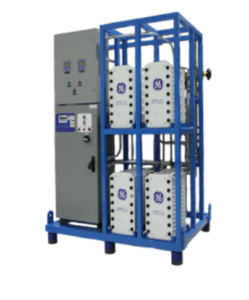Dissolved solids in water and their significance
About 97% of the world’s water (i.e., sea water) is unusable for most of the general applications only as it carries higher TDS. Similarly, for similar reasons, only less than 1% of the world’s fresh water is useable. Water being a universal solvent has the ability to dissolve a wide range of inorganic and some organic minerals or salts such as potassium, calcium, sodium, bicarbonates, chlorides, magnesium, sulfates etc. These minerals originate from a number of sources, both natural (during hydrological cycle) and as a result of human activities (sewage, urban and agricultural run-off, and industrial wastewater). For all practical purposes, all groundwater originates as surface water. Once underground, the water is moved by gravity and during percolation (the movement of water though the soil, and it’s layers, by gravity and capillary forces) & infiltration process, it dissolves the salts contained in rocks and soil and stored in the underground soil and results in TDS increase. In sea, water also takes salts from the rocks submerged in sea. Higher TDS water seriously effect various industrial processes, effect smooth heating and cooling, increase scaling and corrosion tendencies. Similarly, WHO has set 1,000 ppm TDS as desirable limits for drinking water. For these reasons different technologies are used to reduce the water TDS down to some reasonable value to reduce its impacts and make it acceptable for various uses.
SOLUTIONS WE PROVIDE
Some of the main desalination technologies available are
Water deionizer effectively removes dissolved solids and gases coming with water to make it suitable for pure water applications such as power, semiconductor, pharma, process industry etc,. Deionization is accomplished by passing water through ion exchange columns carrying various type of cation and anion resins. As the contaminated water passes through the resin beds, all the incoming ions, mineral, metals, salts are adsorbed by resins leaving water free of salts. Proper designs and operations may produce class-1 ultra pure water with water resistivity of over 18 MΩ (conductivity of approx 0.05 µS/cm). Two column and mixed bed deionizers are commonly used configurations. However, depending upon the feed water and treated water quality, other configurations may also be used. Deionizers, demineralizers, DI and DM are the different names used for the same equipment. Available in manual, semi-automatic, fully automatic, service and non-regenerable mode.

Reverse osmosis (RO) system utilizes membrane separation technology to reduce water TDS and produce quality water for various industrial process, commercial and drinking water applications. RO membrane elements use a strong pressure gradient to drive water through small pores of the semi-permeable membrane, while leaving salts and other larger molecules behind. Most RO membrane rejects salts upto 97% of the feed TDS whereas bacteria and virus reductions of 99.7 to 99.9% are also achievable. For varying feed water TDS, RO systems are usually grouped into tap water, brackish water and sea water RO system, Capacities upto 2 MGPD available. Depending on the feed water quality and end use of RO permeate, specific pre- and post– treatment systems are required for the smooth RO operation. Commonly uses 4” and 8” dia CA or TFC RO membranes. Capacities ranging from 50 GPD to 10 MGPD are available.

Electrodeionization (EDI) (Also known as Continuous Electrodeionization (CEDI) and Continuous Deionization (CDI)) is an electrically-driven water treatment technology that uses electricity, ion exchange and resin to remove ionized species from water. It is a cost-effective, reliable, chemical-free permeate polishing process of removing ions from feed water. EDI is typically used as an alternative to conventional mixed bed deionizer to polish either single or double pass RO permeate to produce ultrapure quality water. EDI systems do not require the periodic regeneration and downtime like deionizers rather regenerate ion exchange membrane using DC current thus eliminates the need to handle the hazardous chemicals and thus doesn’t produce any hazardous waste stream. Our proven EDI modules can optimize performance, maintain continuous product quality, and produce high-purity water, with high contaminate-ion rejection. Typically product water resistivity of >15 MΩ.cm is consistently achieved using this process. Comprises of single or multiple EDI modules, also called “stacks”. Modules of different flow rates can be plumbed together to provide higher flow rate capacities.

Distillation is the oldest, simplest and the most commonly used method of water desalination. Distillation is thermal energy based process that effectively removes contaminants from impure water. Vapor are produced by heating seawater in a vessel leaving salts behind. These vapors are then condensed to produce freshwater. Based on energy efficiency, multistage flash (MSF), multiple effect distillation (MED), and vapor compression (VC) are most commonly used technologies. MSF and MED are operated series of stages, each with successively lower pressures and temperatures and may contain from 12 to 25 stages. These thermal processes can produce water with very low salt concentrations (TDS levels of 10 mg/L or less) from feed TDS levels as high as 60,000-70,000 mg/L TDS, however, cheap thermal energy sources is required to keep these processes economical.

